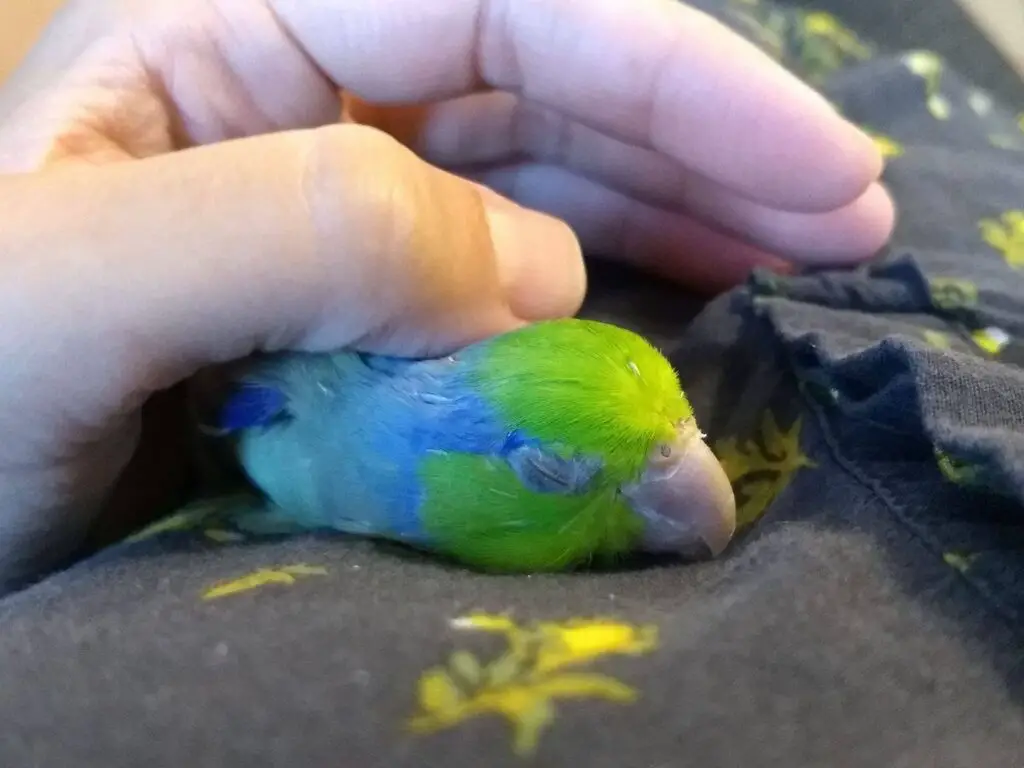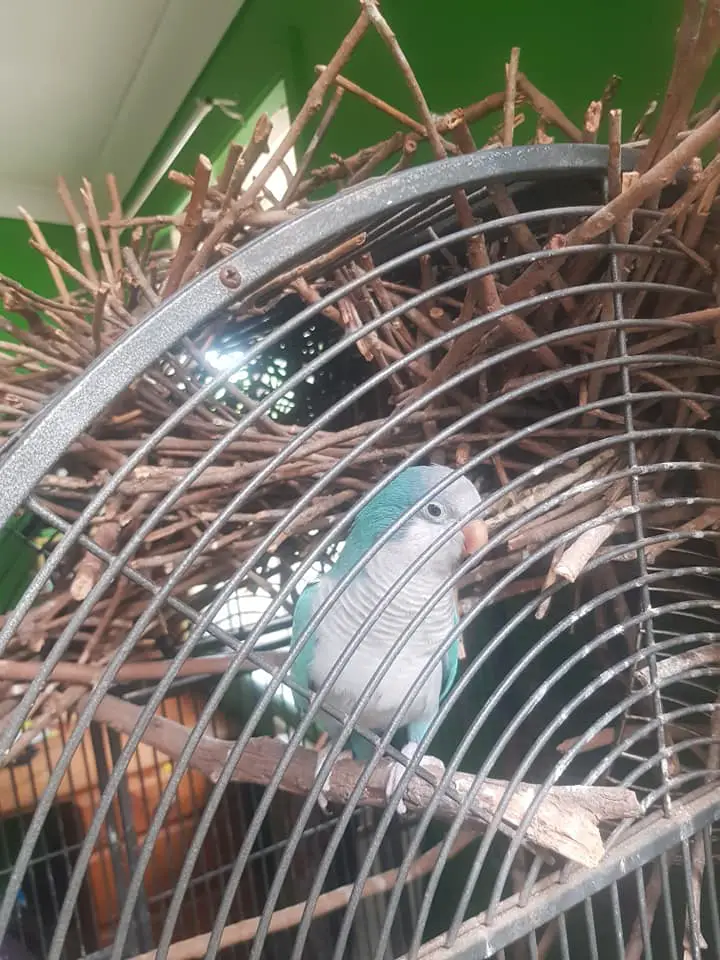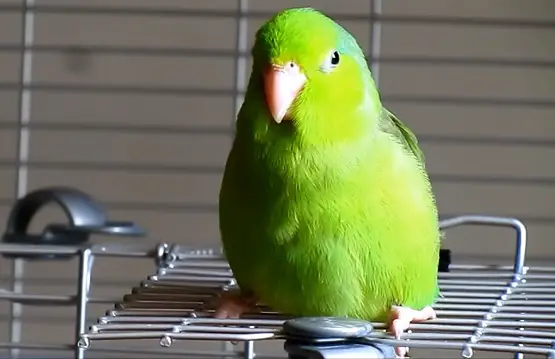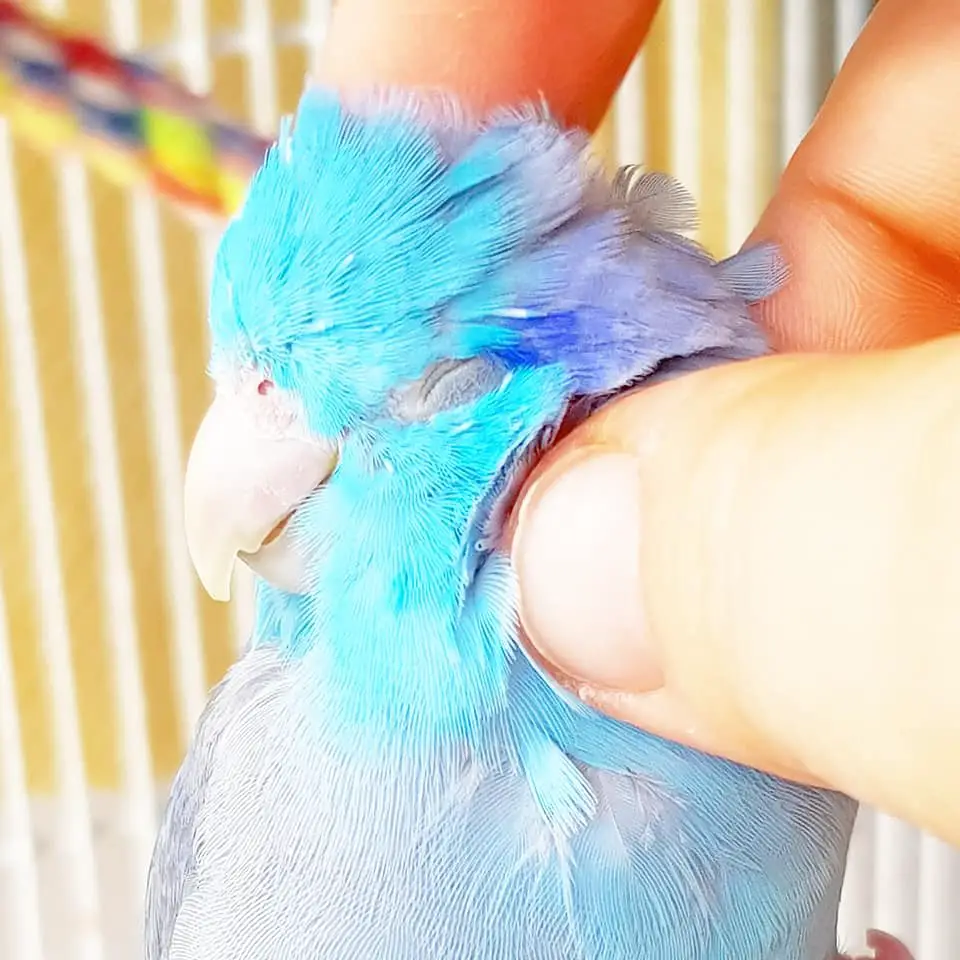Parrotlet vs Quaker parrot: Things to consider before adoption
Parrotlets and Quaker parrots are two popular bird species that make great pets. They both have their unique characteristics and quirks, making them interesting choices for potential bird owners.
In this blog post, we will explore the differences between these two types of birds, including behavior, intelligence, talking ability, personality, food, maintenance and care, noise level, biting issues, cage aggression, cuddliness, cage size, and toy preferences.
So, whether you are trying to decide which bird to bring into your home or are simply curious about these fascinating creatures, read on to learn more!

Size differences
Parrotlets are smaller than Quaker parrots, typically measuring about 5 inches in length compared to the Quaker’s 12 inches.
Behavior
Parrotlets are known for being more territorial and aggressive than Quaker parrots, which are generally more social and outgoing.
Temperament towards other birds
Parrotlets are known for aggressive behavior towards other birds, even other parrotlets. There are many incidents of killing bonded pairs of parrotlets. Supervision is a must while letting parrotlets out of the cage with other birds. Do not be misguided by the parrotlet’s size. They will take any opponent from Macaws to budgerigar. On the other hand quaker are not aggressive to other birds. They can stay together, I mean they can spend time out of the cage together. But letting them share one single cage is not a good idea. Any super sweet bird can be super cage territorial at any time.
Intelligence
Both Parrotlets and Quaker parrots are highly intelligent birds that require plenty of mental stimulation and socialization.
Talking ability
While Quaker parrots are known for their impressive talking ability and can learn to mimic a wide variety of sounds, Parrotlets are not as vocal and may only learn a few simple phrases.
Personality
Parrotlets are known for being spunky and fearless, while Quaker parrots are known for their playful and outgoing personalities. Parrotlets will not hesitate to attack a scarlet macaw if they feel threatened.
Food
Both Parrotlets and Quaker parrots require a balanced diet that includes a mix of fresh fruits and vegetables, high-quality pellets, and occasional treats.
Maintenance and care
Both types of parrots require daily socialization, exercise, and regular cage cleaning to maintain their health and well-being. But parrotlets are easier to take care of than quaker parrots.
Noise level
While both types of parrots can be noisy, Parrotlets are generally less vocal than Quaker parrots. Quakers are loud. The sound of the quaker parrot can be heard from outside of your house. Specially when they do the flock call. On the other hand parrotlets sounds are not that loud. You may not heard it from other room of your apartment house.
Biting issue
Parrotlets may be more prone to biting, especially if they feel threatened or territorial. But their bites are not painful like the bite of quaker parrots. Sometimes you may need stitches to close your wound. Especially quakers become more nippy when hormones strike
Cage aggression
Both Parrotlets and Quaker parrots can display cage aggression if they feel threatened or are not given enough mental and physical stimulation. But quakers cage aggression, something to not taken lightly. As quakers are only parrot species that build nests, so it may be difficult to clean up their cage due to aggression.

Cuddly
While both Parrotlets and Quaker parrots can be affectionate with their owners, Parrotlets are generally more independent and less cuddly than Quaker parrots. Both love head scratches. You can hold a parrotlet in your hand and give a head scratch. Quakers don’t like to be held but they will snuggle with your cheek, neck or hand.
Cage size
Parrotlets require smaller cages than Quaker parrots due to their smaller size. A 24x24x24 inch cage is enough for a parrotlet whereas quaker parrots need at least a 24x36x36 inch cage.
Toys
Both types of parrots require a variety of toys to keep them mentally stimulated and prevent boredom. Parrotlets can play with anything small from pen cap to pencil, hair clip to wrist watch.
Destructive nature
If you bring a parrot in your home, be prepared to sacrifice your wooden furniture. Quaker will sure chew your tv remote, cable, laptop keyboard. On the other hand, parrotlets will not do that.
Feather plucking issue
The Quaker parrot has feather plucking issues. Most medium to large parrots have it. If they suffer from boredom and a good nutritionally balanced diet not provided there is a high chance of plucking the feather. Parrotlets are not known as feather pluckers.

Here is a table comparing Parrotlets and Quaker parrots on various parameters:
| Parameter | Parrotlet | Quaker parrot |
|---|---|---|
| Size | Smaller, about 5 inches | Larger, about 12 inches |
| Behavior | More territorial and aggressive | More social and outgoing |
| Intelligence | Highly intelligent, require mental stimulation and socialization | Highly intelligent, require mental stimulation and socialization |
| Talking ability | Not as vocal, may learn a few simple phrases | Impressive talking ability, can learn to mimic a wide variety of sounds |
| Personality | Spunky and fearless. Parrotlets are chihuahua of birds. | Playful and outgoing |
| Food | Balanced diet including fresh fruits and vegetables, high-quality pellets, and occasional treats | Balanced diet including fresh fruits and vegetables, high-quality pellets, and occasional treats |
| Maintenance and care | Daily socialization, exercise, and regular cage cleaning | Daily socialization, exercise, and regular cage cleaning. Quakers need more engagement with owener. |
| Noise level | Generally less vocal | Can be noisy and loud |
| Biting issue | May be more prone to biting | May be prone to biting if threatened |
| Cage aggression | Can display cage aggression if threatened or not given enough stimulation. Even bondend pair parrotlet can kill each other. | Can display cage aggression if threatened or not given enough stimulation |
| Cuddly | Less cuddly than Quaker parrots | More affectionate and cuddly |
| Cage size | Require smaller cages. 24x24x24 is ok. | Require larger cages. At least 24x24x36. |
| Toys | Require variety of small toys for mental stimulation | Require variety of toys for mental stimulation |
Overall, both Parrotlets and Quaker parrots make great pets for bird lovers, but they have different personalities and requirements.
Parrotlets are more independent than quakers. But parrotlets are fearless bird and have gangstar mentality. Super territorial and will not tolerate anyone, any bird no matter what size it is! They are not known for talking ability. Relatively easy to take care.
Quakers are super talker, cuddly and easily trainable. Show cage aggression but not like parrotlets. But quakers are relatively louder than parrotlets and their bits will draw blood. Bigger bird bigger bite. Quakers are relatively high maintenance bird. They are also loud and need active interaction with owner daily basis.
Want to know more about Quaker Parrots? Read our blog post-
Quaker Parrots | What to expect, the good, the bad and the ugly.
